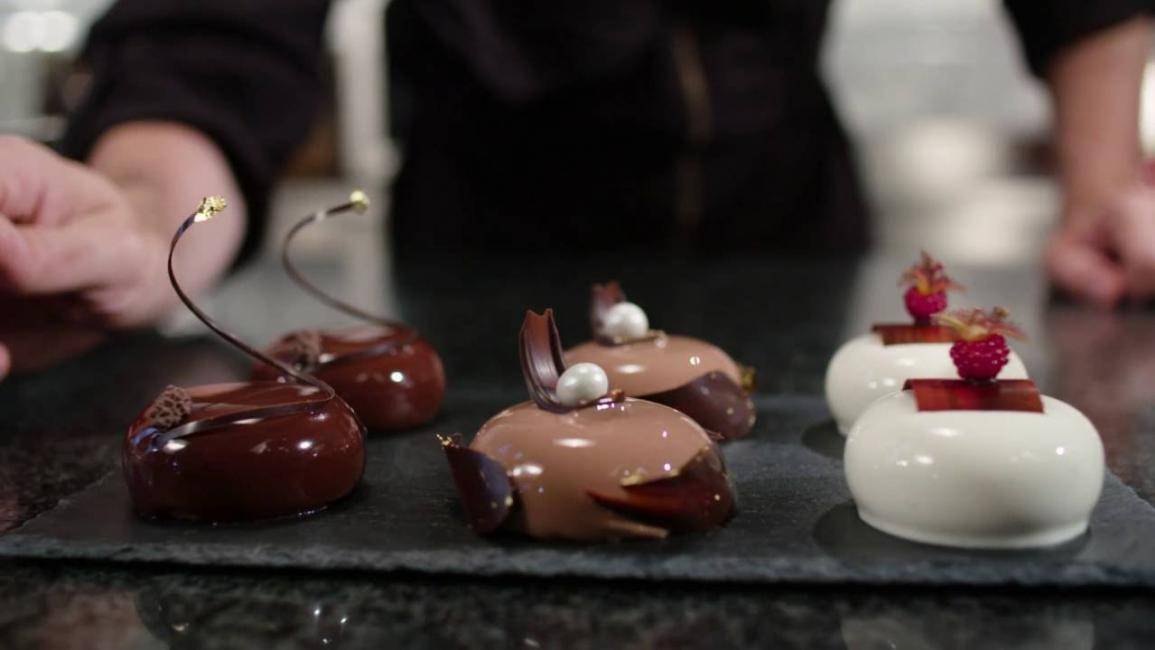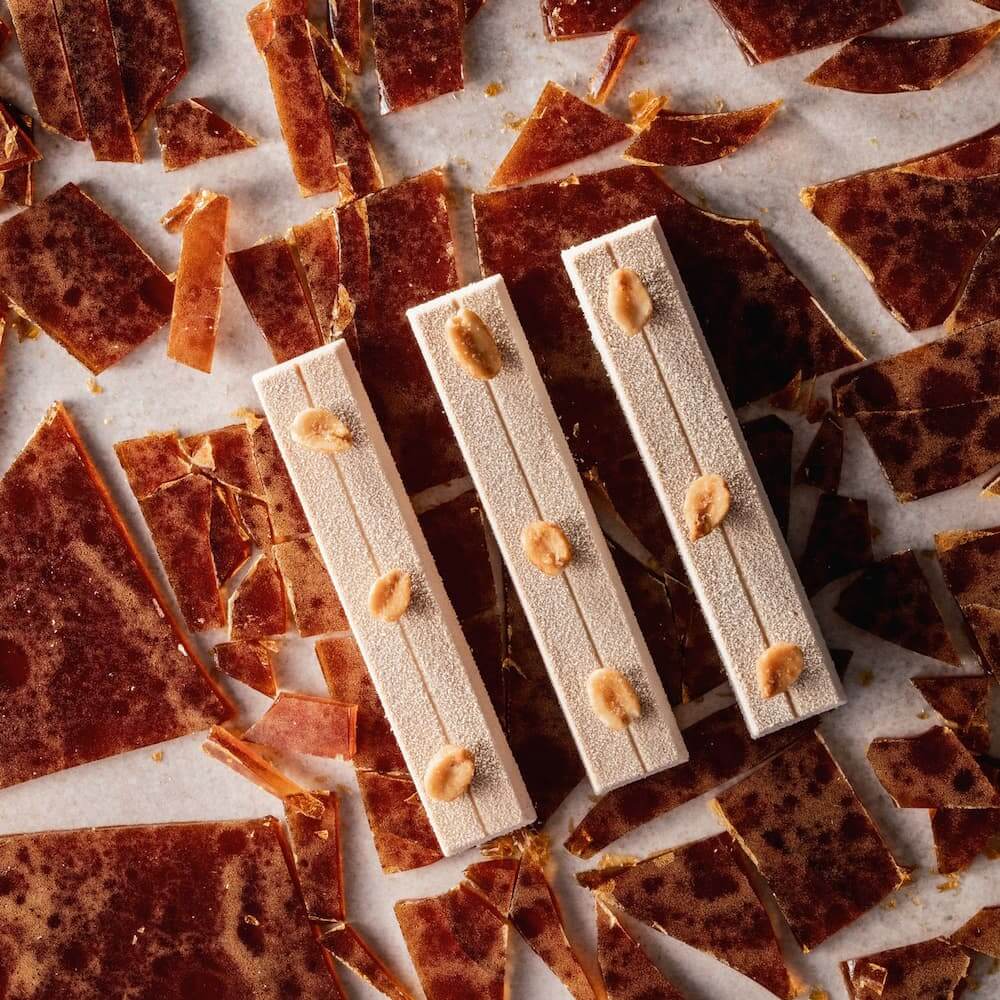Glaze - What makes for the perfect chocolate glaze

What makes for the perfect chocolate glaze
Callebaut chef Alexandre Bourdeaux demonstrates what to look for in a perfect chocolate mirror glaze and why he’s absolutely fond of it.
GOOD TO KNOW
What should you take to heart when making a chocolate glaze?
Always choose chocolate with the right fluidity: a three-drop fluidity is ideal.
Creating a perfectly balanced chocolate glaze recipe is crucial to obtain impeccable results. It will give the glaze the right texture so it holds on the cake for at least 2 days.
A perfectly balanced recipe is also your guarantee for bringing out the typical mirror-like gloss and appetising deep colour in your chocolate glaze.
Mix the ingredients with a stick blender at low speed in a high, narrow recipient. To avoid creating air bubbles, make sure to move your stick blender up and down gently, and to keep its blade under the surface of the liquid at all times.
Respect the cooking temperatures to achieve the perfect glaze thickness: supple enough to be cut without problems, dense enough to hold on the cake.
To obtain a smooth, lump-free glaze made with cocoa powder, it is crucial to pass the mixture through a fine sieve after homogenising it with the stick blender.
Store the glaze in a bowl in the refrigerator. Cover your glaze with a sheet of cling film to keep it out of contact with air. It can be kept for about a week.
Before applying on pastries: heat up the glaze to ±35°C. This gives it the ideal fluidity to be applied easily and evenly.
Always apply your chocolate glaze on pastries frozen at exactly -18°C.
Remove your pastries from the grill as soon as the glaze stops dripping, so before it has set. Otherwise, you could tear holes in the glaze.
Glazed pastries can be stored in the freezer at -18°C. When you take them out, store them in the refrigerator at 4°C immediately for at least 2 hours to avoid condensation.


